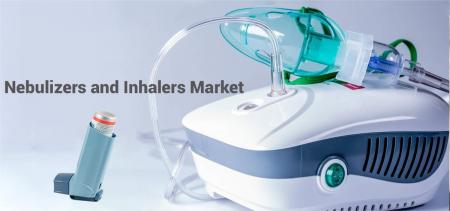The global inhalation therapy nebulizer market, driven by rising respiratory diseases, home-care preferences, and technological innovation, is projected to grow from USD 1.14 billion in 2023 to USD 1.76 billion by 2030, at a CAGR of 5.98%.
Inhalation Therapy Nebulizer Market
Request a sample copy of research report:https://www.datamintelligence.com/download-sample/inhalation-therapy-nebulizer-market
? Market Overview & Growth Drivers
- Market Value & Forecast
Valued at USD 1.14 B (2023), expanding to USD 1.76 B by 2030. - Ageing Population & Respiratory Disease
COPD and asthma, exacerbated by aging and smoking, are fueling demand—North America held ~38% of the market in 2022. - Shift to Home Healthcare
Patients prefer compact, at-home nebulizers to avoid hospital visits—home-care segment forecasts fastest growth. - Smart & Portable Devices
Growth in mesh nebulizers (25.3% market share in 2023) due to compactness, efficiency, and silent operation. Smart IoT-enabled devices enhance monitoring and compliance.
? Technological Advancements
- Mesh Nebulizers Lead
Market share ~25% in 2023. Benefits include portability, efficiency, low noise—key for chronic disease patients. - Ultrasonic & Smart Devices
Ultrasonic types offer efficiency; smart nebulizers integrate apps and tracking to monitor adherence. - Regulation & Green Design
Manufacturers are emphasizing eco-friendly materials and energy-efficient designs.
?? United States Trends
- Type Preferences
Jet nebulizers dominate (~66% share in 2023), valued for reliability in acute settings; mesh devices growing at 5.8% CAGR. - Top Applications
Asthma (~40%) and COPD segments remain key drivers, with increasing home-care adoption. - Home Healthcare Surge
Home-care end-use segment is expected to grow fastest, supported by portable and connected device popularity.
?? Japan & Asia-Pacific Insights
- Japan’s Market Growth
Japan’s nebulizer market is projected to jump from USD 68.7 M (2023) to USD 114.2 M by 2030, at a 7.5% CAGR. - Aging Population Fuel
With ~40% of its population over 65 by 2050, demand for elderly respiratory care devices will skyrocket. - APAC is Fastest Growing
Asia-Pacific region, home to large geriatric populations and expanding healthcare infrastructure, leads growth at ~9% CAGR.
? Growth Opportunities
- Smart Connected Devices
IoT-enabled nebulizers for monitoring adherence, dosage, and remote management. - Portable Mesh Systems
Compact units ideal for travel and outdoor use, especially for COPD and pediatric care. - Home Healthcare Expansion
The trend toward home-based care supports demand for easy-to-use, quiet nebulizers. - Elderly-focused Devices
Designing devices for senior patients with low noise, simple interfaces, and better ergonomics. - Green Innovation
Energy-efficient, sustainable designs resonate with tighter healthcare eco-regulations.
⚠️ Challenges
- Compliance & Adherence
Forgetfulness and complexity reduce efficacy—smart reminders and usage trackers needed. - Device Competition
MDIs with spacers are often preferred in asthma management over nebulizers in many regions. - Regulatory Scrutiny
Strict standards from FDA, EMA, and PMDA require robust clinical validation.
Request a Quotation: https://www.datamintelligence.com/buy-now-page?report=inhalation-therapy-nebulizer-market
? Strategic Recommendations
- Manufacturers should accelerate R&D in smart mesh devices, focusing on portability, quiet operation, and user-friendly design.
- Healthcare Providers need to support patient education on adherence and benefits of smart nebulizer features.
- Regulatory Bodies should streamline approval paths for digital health-enabled devices while maintaining high safety standards.
- Investors: seek opportunities in connected devices, elder-care niches, and APAC expansion.










留言 (0)